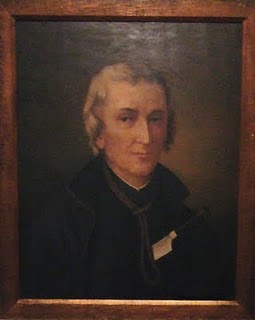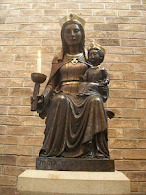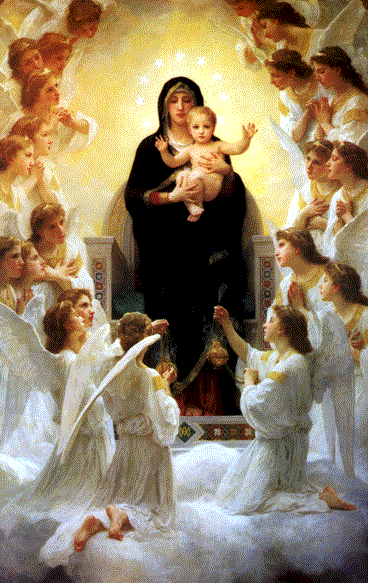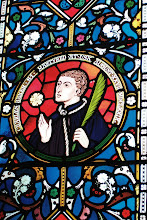
The first reading at Mass today, the second Sunday of Advent, is Isaiah 11:1-10. Isaiah tells us that “A shoot springs from the stock of Jesse, a scion thrusts from his roots:” In the Genealogy of Jesus Christ as related in Matthew 1:1-17 and Luke 3:23-28, we see that Jesus descended from Jesse’s son, King David, and therefore, from Jesse.
Since medieval times Jesse has been placed at the base of Christ’s Family Tree. From the eleventh century the Tree of Jesse has been portrayed in religious iconography. In the representation of the Tree, it is usual for Jesse to be portrayed recumbent with a tree rising from his body and the ancestors of Christ portrayed in its branches, with Christ at the summit.
St David Lewis was born in Abergavenny in 1616. Although his mother, Margaret Pritchard, was a devout Catholic, David’s Protestant father, Morgan Lewis, brought David up in the Protestant faith. As a Protestant, David would have been baptised and attended services at St Mary’s Priory Church in the town. This beautiful and ancient church still serves Abergavenny today. Led by its popular and dedicated vicar, St Mary’s is a vibrant parish. Its recently restored Tithe Barn is a delightful and informative place to visit but the Priory Church itself is chock full of interesting features and historic treasures. Perhaps its most famous is its Jesse!
The Abergavenny Jesse is a 15th century figure carved from a single piece of oak. This recumbent Jesse was the base of the Jesse Tree and the Virgin & Child were at the top. The tree was probably around 30 feet high and it is thought to have been a reredos. Originally, the Abergavenny Jesse Tree was vividly coloured and it is still possible to see traces of colour in the details. This magnificent work is one of the finest medieval sculptures in the world. It is our good fortune that, despite the wanton vandalism of Henry VIII in the 16th century and Oliver Cromwell in the 17th century, this beautiful piece of artwork survives.
It gladdens the heart to think that St David Lewis might have looked upon the same Jesse that we can contemplate today. If you live within visiting distance, make it part of your Advent preparations for the coming of Christ. Marvel at the work of this unknown artist then treat your soul to a few quite moments meditating on the words of Isaiah; “A shoot springs from the stock of Jesse, a scion thrusts from his roots:”









.JPG)

.JPG)



.JPG)

That is an amazing sculpture. I always wondered about the Jesse Tree tradition, thanks for explaining it.
ReplyDeleteWonderful post..thankyou.
ReplyDeleteI WISH MORE FAMILIES WOULD INCORPORATE THE JESSE TREE AND THE ADVENT CALENDAR INTO THEIR TRADITIONS,INSTEAD OF CONCENTRATING SOLELY ON THE CHRISTMAS TREE.
ReplyDeleteOne of the earliest depictions of the Jesse Tree dating from c.1145 AD is to be found in a stained glass window in the West facade of Chartres Cathedral while another splendid (Welsh) example, in stained glass -of the early 16th Century- may be seen in the church of St Dyfnog in Llanrhaedr in the Vale of Clwyd.
ReplyDeleteThere's always something splendid to learn in your posts.
ReplyDeleteThank You Very Much.
g
Thanks, Breadgirl! This post was very interesting. Great pictures, too!
ReplyDeleteI shall definitely visit, cannot make it this Advent but early in the New Year! God bless, Breadgirl
ReplyDeleteGood Afternoon Friends
ReplyDeleteThank you all for visiting and for your interesting and welcome comments. You encourage me in my efforts to spread knowledge of the Last Welsh Martyr, St David Lewis. And Lloyd, I will definitely check out your blog.
God bless you all.